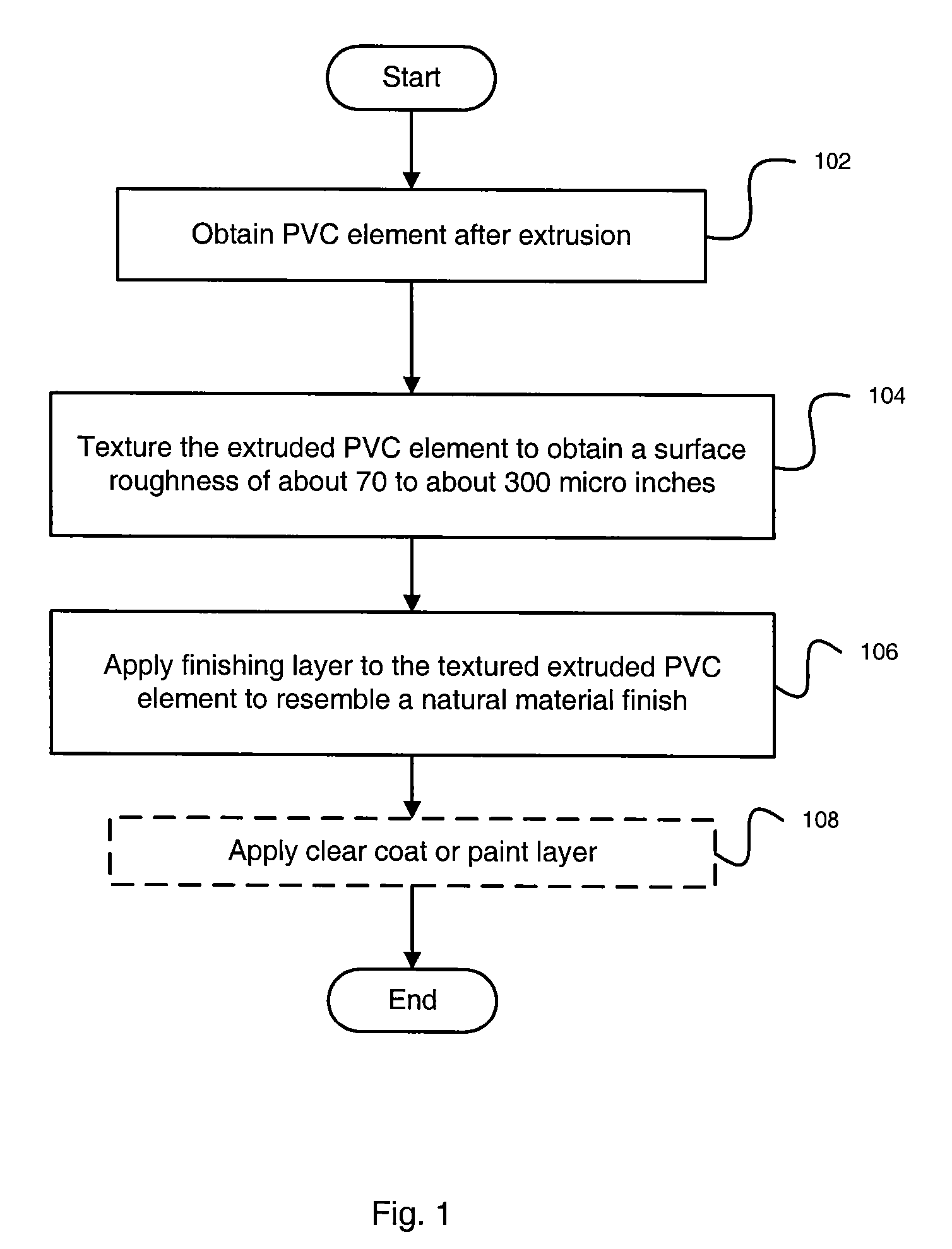Method of texturing synthetic material extrusions
a synthetic material and extrusion technology, applied in the direction of nuclear engineering, transportation and packaging, railway signalling, etc., can solve the problems of inability to easily apply the embossing method to hollow, rigid pvc extrusions, and the appearance modification of installed extrusions is not an option
- Summary
- Abstract
- Description
- Claims
- Application Information
AI Technical Summary
Benefits of technology
Problems solved by technology
Method used
Image
Examples
Embodiment Construction
[0023]Generally, the present invention provides a method of texturing a synthetic material part such as, e.g., a PVC extrusion, to resemble a natural material. The synthetic material part can be formed by any suitable process such as, e.g., extrusion, compression molding, injection molding, thermoforming, etc. The method includes a step of texturing, for example, by abrading the synthetic material part after the formation of the part in question. The step of texturing can occur post-cooling of the synthetic material part. The texturing can be done in order to achieve a surface roughness of about 70 to about 300 micro inches roughness average Ra, which is a parameter known in the art of surface textures and is defined as the arithmetic average of the absolute value of the amplitudes in the surface height.
[0024]An exemplary method of the present invention can include producing roughness on a surface of the synthetic material part with a line pattern to make the textured synthetic mate...
PUM
| Property | Measurement | Unit |
|---|---|---|
| roughness average | aaaaa | aaaaa |
| Ra | aaaaa | aaaaa |
| gloss | aaaaa | aaaaa |
Abstract
Description
Claims
Application Information
 Login to View More
Login to View More - R&D
- Intellectual Property
- Life Sciences
- Materials
- Tech Scout
- Unparalleled Data Quality
- Higher Quality Content
- 60% Fewer Hallucinations
Browse by: Latest US Patents, China's latest patents, Technical Efficacy Thesaurus, Application Domain, Technology Topic, Popular Technical Reports.
© 2025 PatSnap. All rights reserved.Legal|Privacy policy|Modern Slavery Act Transparency Statement|Sitemap|About US| Contact US: help@patsnap.com



